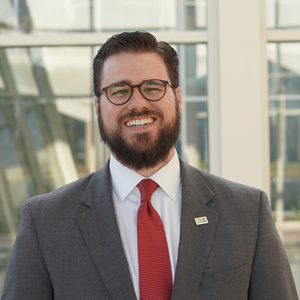
Criminal Justice
Ryan Haynie | October 9, 2020
Red River rivalry and criminal justice
Ryan Haynie
Tomorrow, the University of Oklahoma will face off against the University of Texas on the gridiron. 2020 won’t leave us alone, so the game won’t look the same this year. And though the teams’ records this year don’t inspire a lot of enthusiasm, it still remains one of the greatest rivalries in college sports.
Over the last 20 years, Oklahoma has had the edge over Texas in the Cotton Bowl in Dallas. Even considering the losses Oklahoma has taken at the hands of the Longhorns, there is little doubt Oklahoma has dominated the conference since Bob Stoops took over in 1999. With both teams looking vulnerable this year, let’s look at one area where Texas has dominated its rival across the Red River.
In 2004, Texas had the second-highest incarceration rate in the United States and one of the worst crime rates as well. Since then, Texas has seen dramatic reductions in both crime rates (down 23.77% from 2005 to 2014) and incarceration numbers (down 20.65%). The result is safer streets and fewer tax dollars spent on corrections.
Oklahoma has seen its own ranking rise when it comes to incarceration. And in recent memory, Oklahoma’s crime rates have never ranked as poorly as its incarceration rate. Still, Oklahoma lags seriously behind Texas—a state with similar demographics and a similar history with respect to criminal justice reform.
While Oklahoma nibbled around the edges of criminal justice reform, our neighbor to the south took a serious approach, and the results are a model for the rest of the country. A look at Texas’s “playbook” reveals Oklahoma has a lot of ground to make up.
In 2005, the Texas legislature allocated $15 million to probation departments if they met certain goals. From 2005 to 2010, participating departments reduced technical probation violations by 16 percent.
In 2007, Texas invested $241 million in treatment and diversion programs. From 2006 to 2008, it saw incarceration rates fall as the national average increased. Instead of having to build new prisons as it was poised to have to do, it has not had to build any new prisons since 2007, but instead has closed three.
In 2009, Texas focused on laws incentivizing good behavior for inmates and helping offenders successfully reenter society. The bills included temporary housing for certain parolees up to the amount that it would cost to incarcerate them.
By 2011, Texas was seeing the fruit of its initial investment. It was able to close Sugar Land Central Unit, saving taxpayers $20 million per year. That year, Texas focused on incentivizing offenders to earn degrees, pay restitution, or complete treatment programs.
The 2013 legislative session saw the Texas legislature provide indemnity for employers against claims of negligent hiring when they hire ex-offenders, providing certain practical exceptions for public protection. That same year, Texas also tackled victim’s rights by instituting victim-offender conferencing.
The 2015 session brought about even more reforms, and Texas continues to seek ways to improve its criminal justice system. The reforms I’ve mentioned here are just the tip of the iceberg. According to FBI statistics from 2007 to 2014, violent and property crimes both went down, with property crime dropping drastically.
As someone who holds two degrees from the University of Oklahoma, it pains this Sooner to admit Texas does anything better than my home state. Former OU president George Lynn Cross once famously quipped he wanted to build a university the football team could be proud of. It’s time Oklahoma takes a hard look at its criminal justice system, and rebuild it so that our football team—and all of us—can be proud of it.

Ryan Haynie
Criminal Justice Reform Fellow
Ryan Haynie serves as the Criminal Justice Reform Fellow for the Oklahoma Council of Public Affairs. Prior to joining OCPA, he practiced law in Oklahoma City. His work included representing the criminally accused in state and federal courts. Ryan is active in the Federalist Society, serving as the Programming Director for the Oklahoma City Lawyer’s Chapter. He holds a B.B.A. from the University of Oklahoma and a J.D. from the University of Oklahoma College of Law. He and his wife, Jaclyn, live in Oklahoma City with their three children.